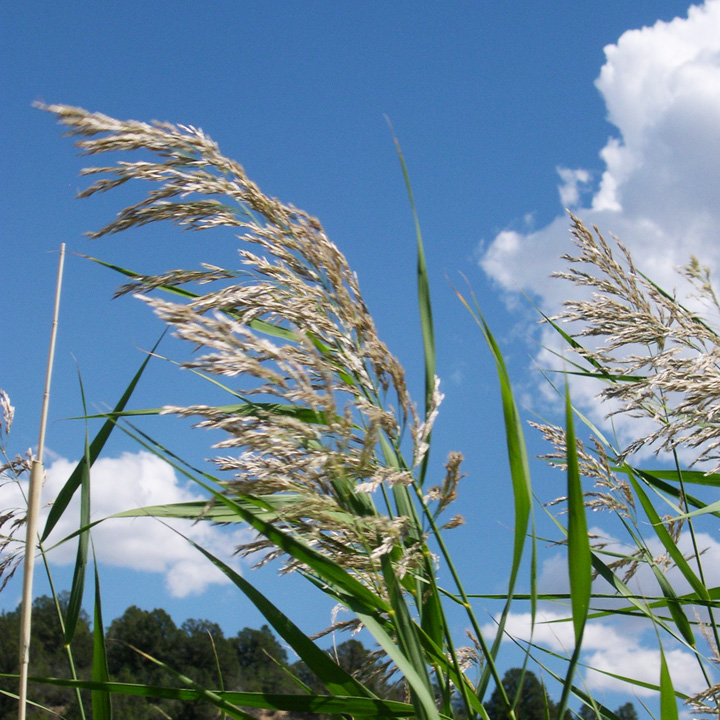Phragmites
|
Family: Poaceae |
Plants perennial; rhizomatous or stoloniferous, often forming dense stands. Culms 1-4 m tall, 0.5-1.5 cm thick, leafy; internodes hollow. Leaves cauline, mostly glabrous; sheaths open; ligules membranous, ciliate; blades flat or folded. Inflorescences terminal, plumose panicles. Spikelets with 2-8 florets, weakly laterally compressed, lower 1-2 florets staminate, distal 1-2 florets rudimentary, remaining florets bisexual; rachilla internodes sericeous; disarticulation above the glumes and below the florets. Glumes unequal, shorter than the florets, 1-3-veined, glabrous; lower glumes much shorter than the upper glumes; calluses pilose, hairs 6-12 mm; lemmas 3-veined, glabrous, unawned; anthers 1-3. Caryopses rarely maturing. x = 12. Name from the Greek phragma, fence, alluding to its fencelike growth. Perennial 5-12 dm, thickened at the nodes, the lower internodes very short, the lowest node often disarticulating; sheaths pilose at the throat; blades 2-4 dm נ3-6 mm; infl narrow, purplish, 1-3 dm, the ascending branches fascicled; glumes lanceolate, mostly 1-veined, the first 2.1-2.6 mm, the second 2.4-3 mm; lemmas glabrous, acute or acutish, 3.4-4.5 mm; rachilla-joints 1.3-2 mm, glabrous or hairy, usually short-pilose at the top; 2n=36. Native of Europe, intr. in fields, meadows, and roadsides from Me. to Pa., w. to Ont. and Wis. Gleason, Henry A. & Cronquist, Arthur J. 1991. Manual of vascular plants of northeastern United States and adjacent Canada. lxxv + 910 pp. ©The New York Botanical Garden. All rights reserved. Used by permission. |

